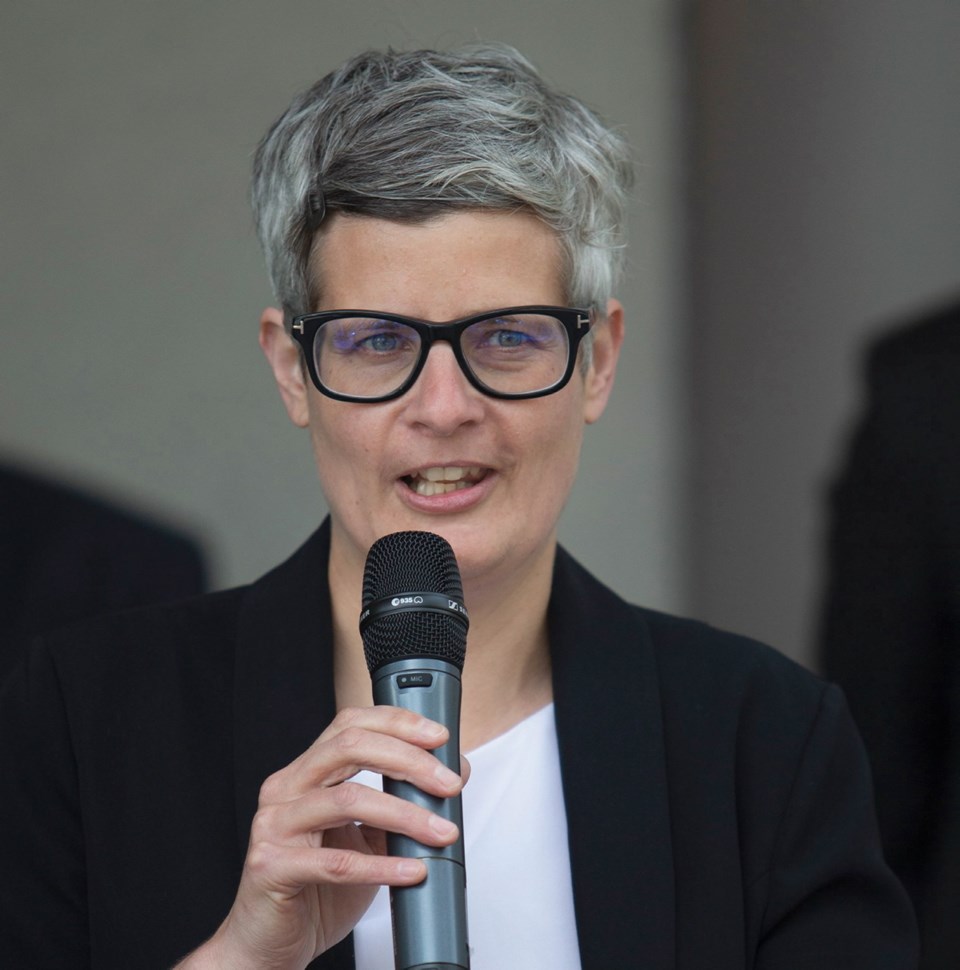Victoria Mayor Lisa Helps launched her re-election bid Friday by promising to seek a default 30 km/h speed limit on all low-traffic neighbourhood streets.
“We’ve heard really clearly that we need streets to be safe. We need streets to be safe for children. We need streets to be safe for elderly people,” Helps told media representatives in advance of her official campaign launch at the atrium of the new Jawl office building at 1515 Douglas St. across from City Hall.
Helps said the push for the lower speed limit is citizen-led and came from “kitchen table talks” held with residents over the past two months.
> For more election news and information, go to timescolonist.com/election
“Kitchen table after kitchen table, neighbourhood by neighbourhood parents asked, can you slow down traffic so my kids can cross the street, so my kids can run out into the street to chase their ball without worries of getting ploughed down,” Helps said.
The current default speed limit on all city streets is 50 km/h unless posted otherwise.
Helps stressed that the change would be on narrow neighbourhood streets classified as “local streets” and not on collectors, secondary collectors or arterial roads.
(A local street is classified as having traffic volumes of less than 1,000 vehicle trips a day, such as Oxford or Chapman. Toronto Street, which sees between 1,000 and 4,000 vehicles a day, is considered a secondary collector. A street such as Fairfield, that would see between 3,000 and 8,000 vehicle trips a day is considered a collector. Superior Street which has between 5,000 and 20,000 vehicles a day is classed as a secondary arterial, while Blanshard Street with 18,000-plus vehciles a day is classed as an arterial.)
Former Victoria councillor Shellie Gudgeon — who with Coun. Ben Isitt in 2014 led the push to lower the speed limit to 40 km/h on downtown streets and on streets such as Richmond, Bay, Quadra, Fort and Southgate — laughed out loud when told of Helps’ announcement.
“Once again Lisa is not seeking balance with the residents and the community of Victoria,” Gudgeon said. “They didn’t want 40 [km/h]. That was a stretch to implement a 40 kilometre limit. I’m still getting pushback from that,” she said.
Gudgeon said it was heavily trafficked roads such as Bay Street that needed to be slowed to 40 km/h because they are heavily used and densely populated.
“Bay Street is where people live who can’t afford to live in the quieter neighbourhoods. They deserve safety and that’s why it went to 40. But 30 is a fricken crawl,” Gudgeon said, adding that rather than moving to 30 km/h, an overall reduction to 40 might get more community buy-in.
Helps also promised changes that would allow larger carriage houses — up to two bedrooms — to be built on the estimated 5,600 oversized residential lots in the city. She envisions garden suites of between 850 and 1,000 square feet being permitted on plus-size lots of 7,000 square feet or larger.
The best option would be some kind of modular design that fits city design guidelines, she said, “and would be cheaper, easier and faster to build.”
“This will allow people to keep their kids sometimes literally right in their own backyard. Build a small two-bedroom garden suite on a lot and have their families close,” Helps said.
“In my mind, this election is about the future of the city. It’s about how we make Victoria affordable for everyone for all time. It’s about how we get ready for changing climate,” Helps said.
“It’s how we keep our downtown vibrant, our economy growing and make sure that even as the city grows and changes no one gets left behind.”



